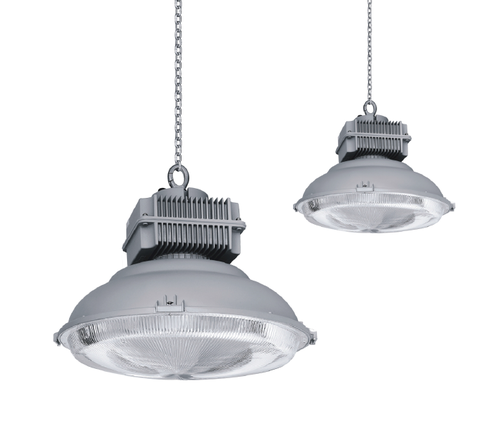Businesses throughout Australia are feeling the pressure with energy prices that compound to their ever increasing overheads.
Many businesses these days choose not to turn on their warehouse and office lighting to reduce costs. This increases risk of injury and loss to both warehouse staff and business equipment.
There are many solutions available on the market today to cater for Home and Office fixtures. At Lights Every Direction we specialize in an extensive range of led and Induction lighting to suit many applications and environments. From Standard Light bulb alternatives to Led Fluorescent tubes and even led down lights. Speak to our technical sales team today on how we can assist in reducing your power bill at home or work.
Now getting back to warehouse lighting where this is a critical element for it's daily operations. We discuss the main benefits of changing to the ISITE Range of High bay Induction Lighting.
Why don't many businesses upgrade from the old Metal Halide to LED ?
Many businesses have done so but are not receiving any advantages, with Led High Bay Lights ranging from 100 to 300 watts the beam is extremely focused and intense. This causes the Iris in your eyes to close as the intense light is focused to ground level.
The other disadvantage is that Led High Bay Lights operate at a much higher temperature, this then increases your cooling systems operating costs.
The answer to this is Electrode-less lamps known as Induction Lights . Here Wikipedia has a brief write up about What Induction Lights are.
But to answer it simply.
Electrodeless lamp or induction light is a gas discharge lamp in which the power required to generate light is transferred from outside the lamp envelope to the gas inside via an electric or magnetic field.
Quick Points on why High Bay Induction Lighting is the best solution to your business.
- Induction high bay lights have a bulb life of up to 100,000 hours which equates to over 12 Years if left on for a 24 hour period.
- Metal Halide Light bulbs are rated to 20,000 to 30,000 hours and this is reduced depending on its mounting position.
- Induction High Bay Lights have slow lumen depreciation (visible light loss) in which it can maintain up to 75% of its original lumen output for 60,000+ hours.
- Whilst Metal Halide Light bulbs, light loss is greater whereby 5% is lost within the first 200 hours of operation. then a further loss of 20% every 2000 hours. By five to six months of operation that same 400W light bulb will only offer 50% of its rated output.
- Induction High Bay Lights are virtually maintenance free for the rated life of the bulb and electric ballast.
- Metal Halide Lights require maintenance and no known warranty is offered for these types. Replacement bulbs are generally the $30 Aus mark, however the cost incurred to shut down an area to bring in equipment such as scissor lifts adds to the costs. Other indirect costs would mean a qualified electrician as well as second person as a spotter ( OH&S requirement for working with heights)
- Induction High Bay Lights have an operating temperature of 65C to 95C Degrees.
- Metal Halide Lights Operate from 150C to 300C degrees, this heat impacts the operating temperature in warehouses and food processing plants which in turn increases your energy usage in the form of air conditioning.
- Induction High Bay Lights have a visual "visible" Lumens per watt of 190.
- Whilst Metal Halide Lights have a visual Lumens per watt of 80.
- Induction High Bay Lighting has a color rendering index ( known as CRI) of 90+. This improves vision recognition.
- Metal Halide Lights have a coloring render of 65.
- When comparing the visible Lumens per watt and higher CRI you can benefit greatly with a 200 to a 300 watt Induction High Bay Light in lieu of a 400 watt Metal Halide, Thus increasing your energy efficiency.
- Whilst a Metal Halide Light suffers with lower visual lumens per watt and poor CRI, Higher wattage is needed in a Metal Halide to achieve the same level of light, higher maintenance, faster degrading lumen loss.
- When looking at the quality of light the Induction high Bay Light offers a crisp blue-white light throughout its lifespan.
- Metal Halide Lights suffer from Color shifting as it quickly ages. The obvious signs are the color shifting to pink and grey.
- Induction high Bay Lights have an "instant-on" and instant "re-strike" hence no reduced warm up periods. 90 to 95% out put and then 100% after 25 to 30 seconds (depending on ambient temperature)
- Metal Halide Lights generally have anywhere from a 10 to 30 minute warm up \ re strike period. This then poses a OH&S Risk in the event of a minor power failure or event whereby the switch was accidentally turned off.
- Induction High Bay Lighting can also be used with "Smart Sensors" whereby timers and movement detectors can be used to turn the lights off in specific warehouse applications.
- Metal Halide Lights cannot be used on smart sensors or switches due to warm up periods and high inrush currents.
Doesn't it make simple sense to change over to Induction High Bay Lighting ?
Contact our technical sales team if you would like to discuss how the ISITE Series of induction lighting could further benefit your establishment.

